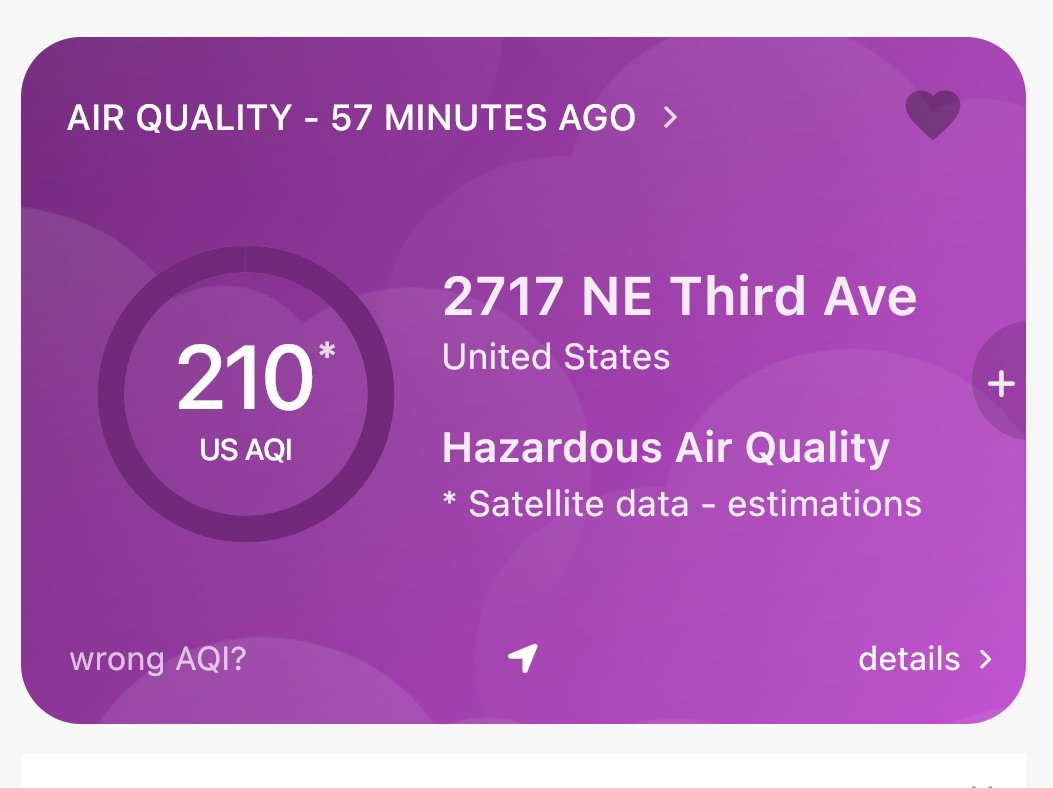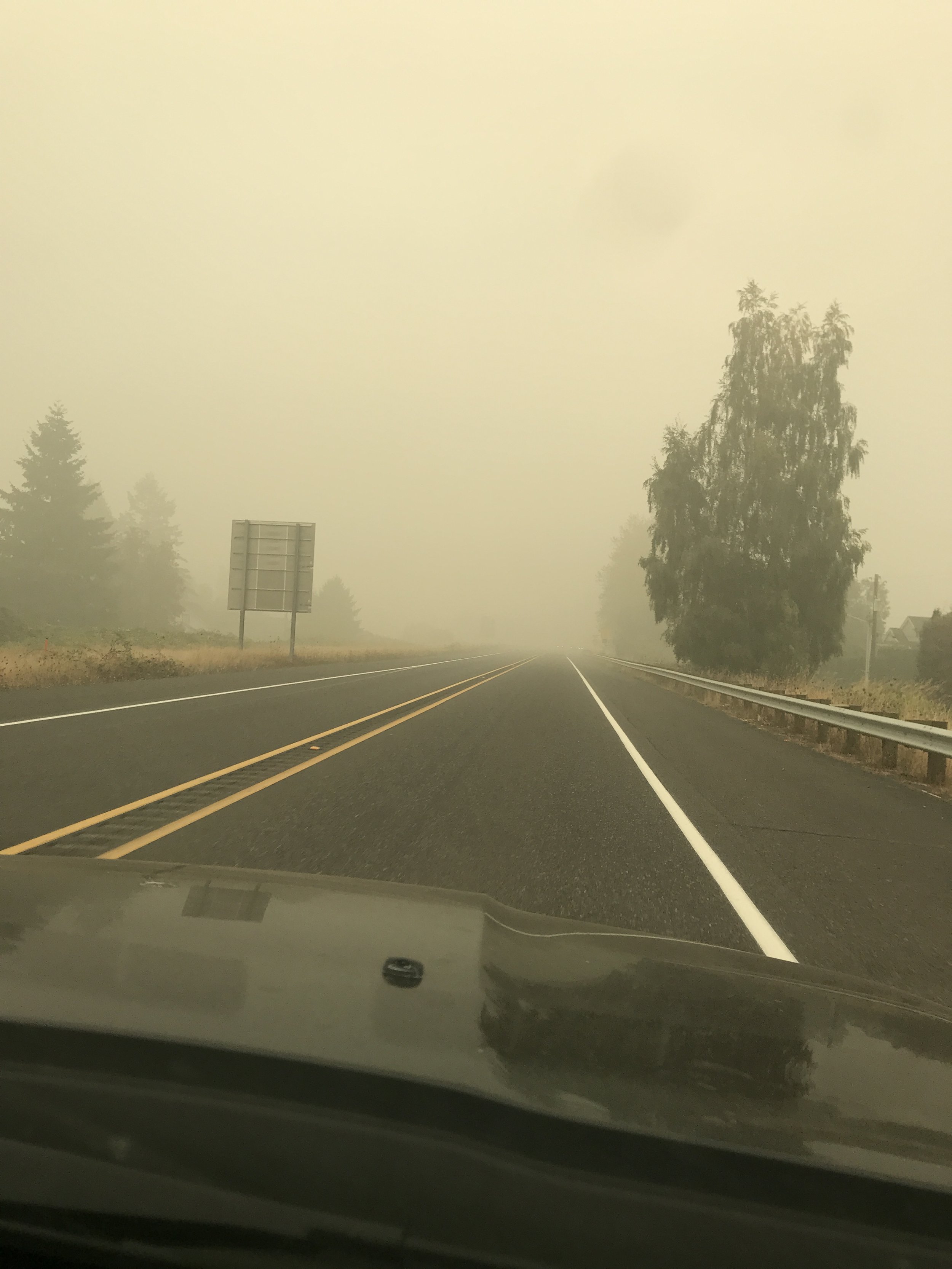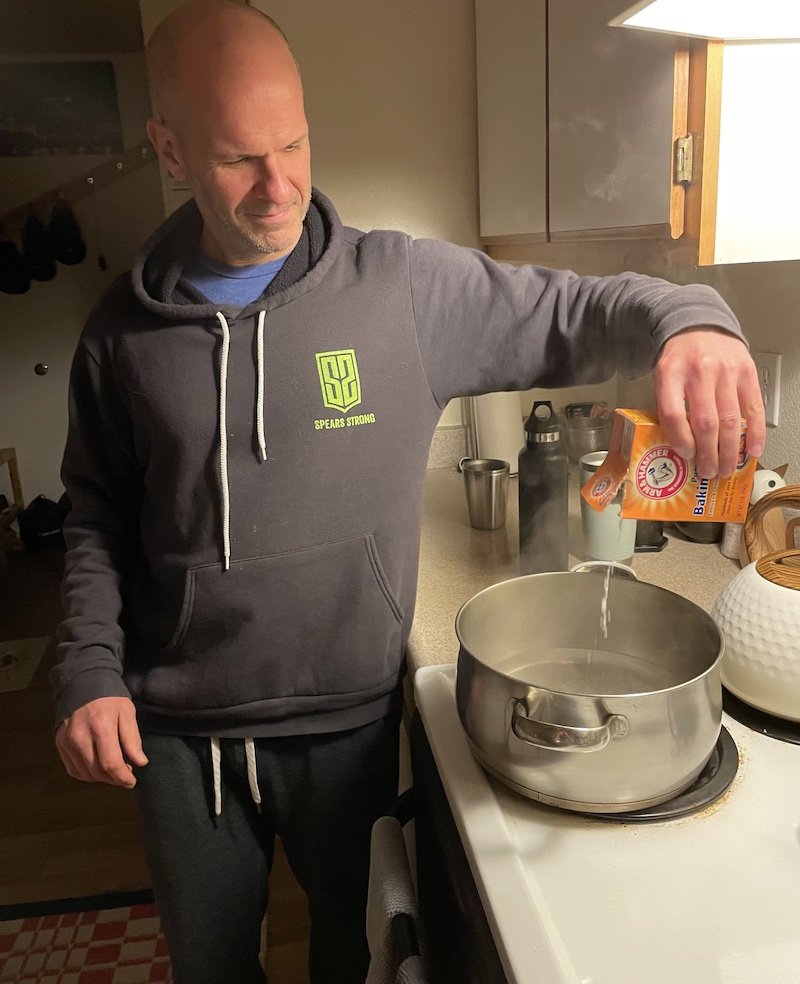Be Intentional About Air
10 min. read
You can taste it. It smells like you’re standing next to a campfire. You feel a scratch in the back of your throat, tightness in your sinuses and you maybe even start sneezing, eyes watering. Maybe you’ve got a slight headache, or you have no energy, or you feel like you’re in a fog.
Smoke is causing the air in Camas to range from very poor to hazardous over the last couple of days. We can’t wait for rain!
We’re experiencing it now in Camas as we all anxiously wait for rain and nervously watch for status updates on the Nakia Creek fire just a few miles away. Air quality levels are ranging from “very poor” to “hazardous” because of the nearby fire as well as other fires in Washington and Oregon. Unseasonably warm and dry weather has extended our fire season into October, which is unheard of here.
Smoke has blanketed our area and is unlikely to clear until we (fingers crossed) get rain on Friday.
Poor air quality is unhealthy for everyone and can cause symptoms like headaches, burning eyes, sore throat and fatigue. At Spears Strong we encourage everyone to pay attention to air quality levels. When we take a breath we take in tens of billons of molecules that affect our internal organs, digestion, mood, heart rate and more.
“Breathing is a power switch to a vast network called the autonomic nervous system,” Author James Nestor says in his bestselling book Breath.
Think about that. The air we breathe matters - a lot.
”The World Health Organization estimates that roughly 7 million people die every year from “exposure to fine particles in polluted air.” That’s at least double the number of people who died globally from Covid in 2020, and more than five times the number of people killed every year in car crashes. The more proximate causes of the pollution deaths include pneumonia, stroke and heart disease. The economic costs of pollution are also massive; one estimate puts it at nearly $3 trillion a year, more than 3 percent of global GDP.” -According to this awesome Freakonomics Podcast
The podcast, “This Is Your Brain on Pollution.”- give it a listen - is fascinating and frightening at the same time. Air pollution can cause lower cognitive abilities, not just when it comes to long-term exposure, but on the exact day that air quality is poor. So none of us in Camas should be taking tests or doing important presentations- and you should probably forgive any poor grammar or improper writing structure in this blog post as I write it with air quality levels hovering around hazardous.
All of this is great motivation to breathe through your nose, your body’s air filtration system.
Smoke filled the air in September 2020 when hazardous air quality was above 500.
The last time our air was like this was in September 2020 when our air quality was off the charts, beyond the hazardous range. This was when Jonathan started researching air quality and we - midwestern natives unaccustomed to wildfires - started paying attention to the impacts poor air has on our health.
Below we’ve curated tips and resources we’ve vetted and experimented with to help you stay healthy and exercise safely when the air quality is unhealthy. We’ve also got tips on how to deal with smokey conditions and improve your indoor air quality.
This is not only important for those of us surrounded by wildfires, but it’s also important for the rest of you. Air pollution is everywhere and varies day to day so give the tips a read and if your air is in the green take a nice deep breath for the rest of here in the PNW.
How to stay healthy and exercise in poor air quality
Staying healthy when it’s smokey outside or the air quality is poor really means doing all the things we focus on at Spears Strong, with an emphasis on relieving stress and doing mellower movement! It’s also about staying informed on air quality. It’s not something we see often on the news or social media so you’ve got to be your own journalist and do a little investigating. Even when there’s not an official air quality alert or the weather looks sunny and inviting, the air can still be unhealthy and even dangerous.
Monitor AQI levels (pollutants) daily - This number can change day to day and even hour to hour and can be different than areas even a couple miles away from you.
We use and recommend this app called AirCare (no affiliation) and we love it (beware it’s addictive). It updates every hour, they pull data from stations near to you and keep an average from multiple stations to ensure accuracy. It also gives you predictions for what may happen in the coming hours. It also has a map to see nearby air quality and fires. Below is the range used by AirCare. There are several apps out there and governments track it and provide information as well. You may see variations in the ranges due to how they calculate air quality.
If you have to go outside when levels are unhealthy, consider wearing a pollution mask (see link below from Washington state for recommendations.
“I always go for my morning walk, and I always check on my phone: what is the air quality index for today? If it’s below 50, you are in a good or green color of the AQI. If it’s between 50 and 100, it’s yellow, like the moderate pollution. And then above 100 is when I avoid leaving the house because that’s where it starts getting a little bit unhealthy to be outside.”
<50 Air is good: get outside!
<100 Moderate: reduce intensive outdoors activities. If this number is in the high range we will not go for a run and opt for a mellow walk and indoor exercise.
>100 poor to very poor air quality (close doors and stay inside)
>200 Hazardous (close doors, windows and follow tips below for reducing smoke indoors)
“I always go for my morning walk, and I always check on my phone: what is the air quality index for today? If it’s below 50, you are in a good or green color of the AQI. If it’s between 50 and 100, it’s yellow, like the moderate pollution. And then above 100 is when I avoid leaving the house because that’s where it starts getting a little bit unhealthy to be outside,” Edson Severnini, economist at Carnegie-Mellon University, says in the Freakonomics podcast.
We agree.
We will close our windows at the high range of moderate because our cat has asthma and is sensitive to pollutants and smoke. Anything over 100 Jonathan and I pretty much stay inside. Once it starts getting into the very poor to hazardous range we do everything we can to stay inside and improve indoor air quality.
Exercise safely. When air quality is poor to hazardous it is not the time to push yourself. Hold off on high intensity workouts, runs or sports until the air clears. Focus instead on your Foundation- the movement that’s designed to improve your health and keep you feeling good. Gentle movement indoors will reduce stress and boost your immune system. Spears Strongers’ Movement Improvement routines, Morning Warmup, Evening Unwind, Decompress, Stretch & Strength or Basics are all great options for relieving stress and feeling better.
Hydrate: You need more water with the dry air and because your body is producing more mucous to deal with the bad air. Drink up.
Sleep: As always, everything’s tougher when we’re low on sleep. If you’re feeling tired due to the air quality take a nap.
Eat well: All the things we focus on at Spears Strong with our Themes of the Month are essential to keeping yourself healthy through poor air. That includes eating lots of fruits and veggies! I’ve been adding some extra ginger to our morning tea for a little anti-inflammatory action and digestive relief. If you’re feeling nauseous that can also be a symptom of smoke or pollution inhalation.
Breathe, breathe, breathe: in and out through your NOSE, slowly.
If you're struggling to breathe in this smoky air or you're just feeling nervous, try counting to 5 while you breathe in through your nose and then to 5 while you breathe out. This will slow your breathing and help you relax. Nose clogged? Your nose does a lot of work and filters out pollution, especially now, so do it a favor and clear out the clogs with a Neti Pot or a breathing method such as nasal unblocking or Wimhof breathing.
Jonathan tries out the baking soda simmer to improve indoor air quality and reduce smoke.
Improving indoor air quality and battling smoke
Smoke stinks. Obviously. If you’re getting wafts of smoke or just feel your air is heavy and hard to breathe, here are some tips to improve indoor air quality!
Close windows and doors when the air is predicted to get to unhealthy levels. Before it gets there is best so you avoid any of that icky stuff getting inside in the first place. This is why paying attention to the AQI levels helps. Seal off any potential openings (close curtains, use painters tape, lock doors and windows)
Invest in a HEPA air purifier and change filters as needed.
Get some humidity in your space. This will help to settle any smoke and make breathing a little easier. We have been walking around our apartment with a spray bottle of filtered water. You can also boil water: make some tea, boil some potatoes for dinner, take a hot shower (followed by a cold rinse, of course).
Simmer a little baking soda and water. We tried this today and breathing feels a little easier and we do not smell any smoke. We definitely feel better despite the air quality levels getting worse.
Read more tips from the Oregonian on improving your indoor air quality.
Additional Resources:



